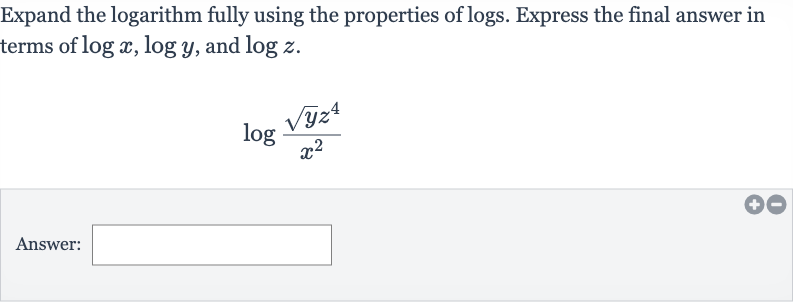Full solution
Q. Expand the logarithm fully using the properties of logs. Express the final answer in terms of , and .Answer:
- Apply Quotient Rule: Let's start by applying the quotient rule of logarithms, which states that . So, we have .
- Deal with First Term: Now, let's deal with the first term, . The square root is the same as raising to the power of , so we can rewrite this as .Using the power rule of logarithms, which states that , we get .
- Apply Product Rule: Next, we apply the product rule of logarithms to the term , which states that . This gives us .
- Apply Power Rule: Now, let's apply the power rule again to , which gives us . So, we have .
- Distribute Coefficients: We can distribute the to both terms inside the parenthesis, resulting in , which simplifies to .
- Address Second Term: Now, let's address the second term from step , . Applying the power rule of logarithms, we get .
- Combine All Terms: Finally, we combine all the terms together to get the expanded form of the original logarithm.We have which becomes .

